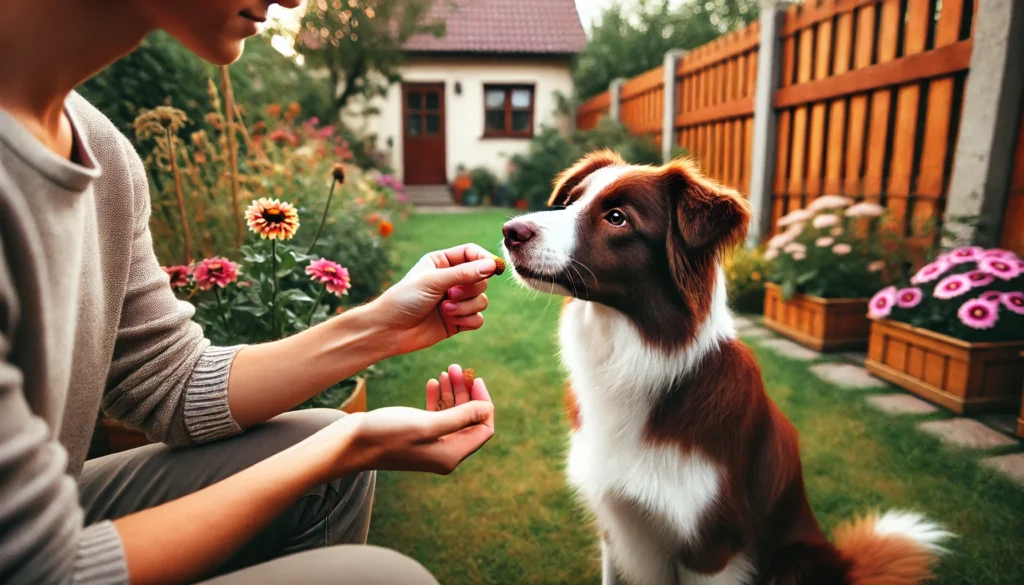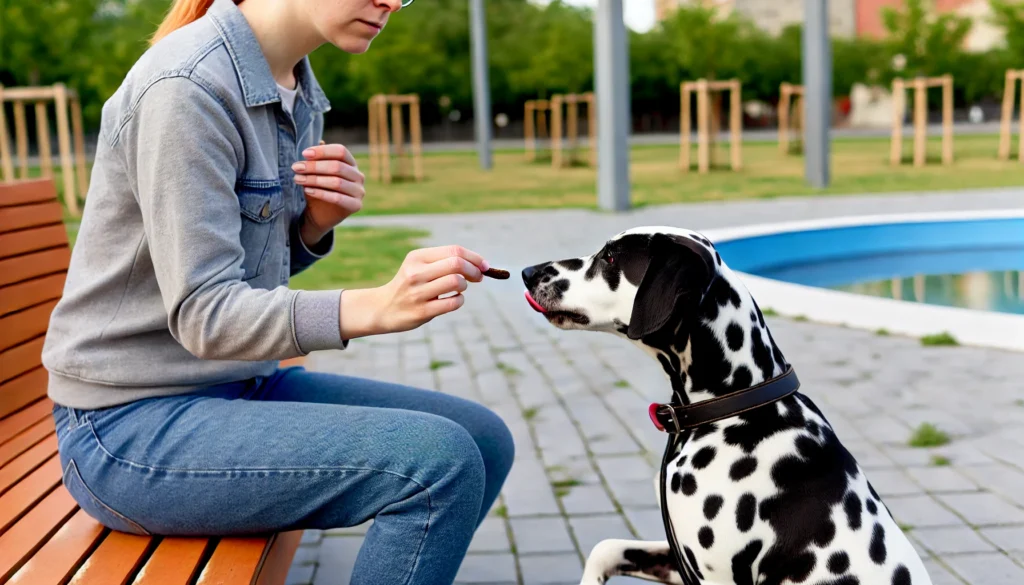Training your dog to obey the “sit” command is essential for a harmonious and controlled coexistence. This command is not just a trick, but one of the fundamental pillars of good dog behavior.
Correct training can prevent many behavioral problems and make daily interaction with your dog easier. Therefore, if you are ready to venture into the world of dressage, follow this complete guide that we have prepared for you.
Why Teaching Your Dog to Sit is Important?
Teaching your dog to sit is crucial for several reasons. Firstly, this command is a solid foundation for other training and desirable behaviors. When your dog knows how to sit, you have more control in situations such as visits from friends, walks, and even at mealtimes. Furthermore, a dog that knows how to sit is less likely to jump on people, run into traffic or behave in an unruly manner. Therefore, the “sit” command not only makes the owner’s life easier, but also promotes the animal’s safety and well-being.
Preparing for Training
Before starting training, it is vital that you prepare properly. Choose a quiet place, free from distractions, where your dog can concentrate. Keep high-quality snacks on hand that are small enough to eat quickly. Additionally, use a leash and collar to help guide your dog through his first steps. This way, you ensure that the environment and tools are in your favor, increasing the chances of success.
First Training Steps
To start, keep your dog upright and hold a treat near his nose. Slowly move the treat up and back toward the tail. This action should encourage your dog to follow the treat with his nose, naturally resulting in the sitting movement. As soon as he sits, say “sit” and give him the treat immediately, followed by lots of praise. This first step is crucial, as it establishes the association between the verbal command, the gesture and the reward.

Repetition and Consistency
The key to success in dog training is repetition. Practice the exercise several times a day, but keep sessions short to prevent your dog from becoming bored or frustrated. Consistency in using the command word and delivering the treat is essential for your dog to associate the act of sitting with the verbal command and reward. Therefore, be patient and persistent, as consistency is the basis of learning.
Introducing the Verbal Command
After a few repetitions, your dog will begin to associate the hand movement with sitting. At this point, it's time to introduce the verbal command. Say “sit” clearly before moving the treat. Over time, your dog will begin to associate the word with the behavior and will sit without needing the treat as a guide. Continue rewarding your dog every time he obeys the command to reinforce the positive association.
Training in Different Environments
Once your dog is consistently responding to the “sit” command in a calm environment, it’s time to increase the difficulty. Start practicing the command in different places and situations, such as in the park, during walks or when there are guests at home. This will help your dog generalize the command and obey even with distractions. Varying the training environment is essential to ensure that your dog responds to commands in any situation.
Visual and Gestural Signs
In addition to verbal commands, many dogs respond well to visual cues. Use a specific gesture, such as raising your hand with the palm facing up, while saying “sit”. Over time, your dog will be able to respond to the gesture even without the verbal command. This technique is especially useful in situations where the environment is noisy or your dog is far away. Incorporating visual cues into training can increase your dog's effectiveness and obedience.
Maintaining Patience and Persistence
Dog training requires patience and persistence. Each dog is unique and can learn at different rates. It's important not to get frustrated if your dog doesn't learn right away. Continue practicing and reinforcing positive behavior. Remember, training should be an enjoyable experience for both you and your dog. Patience is an essential virtue in the training process.
Correcting Unwanted Behaviors
If your dog doesn't respond to command or starts exhibiting unwanted behaviors during training, such as barking or jumping, it's important to correct him gently and immediately. Use a firm but gentle tone to redirect his attention and restart the command. Avoid yelling or punishing your dog, as this can cause fear and distrust. Proper correction helps keep your dog focused on training.
Involving the Family in Training
Including all family members in the training process is key to ensuring consistency. Each person must use the same verbal and gestural command to avoid confusion. Furthermore, this reinforces the dog's respect and obedience to all members of the household. Involving the whole family in training creates a cohesive and harmonious environment for the dog.
Using Training Tools
There are several training tools that can be useful, such as clickers, which make a specific sound when pressed, helping to reinforce the desired behavior. The clicker is especially effective when used in conjunction with treats, as the sound becomes a clear marker for the dog to associate with the correct behavior. Proper training tools can speed up your dog's learning process.
Keeping Training Consistent
Keeping training consistent is the key to long-term success. Continue practicing the “sit” command regularly, even after your dog has learned it. This not only reinforces the behavior but also keeps your dog mentally stimulated. Consistency in training is vital to maintaining good habits.

How to Deal with Common Challenges
During training, you may encounter some challenges. More stubborn or anxious dogs may need more time and patience. If your dog has difficulty learning, consider reducing distractions, using more appealing treats, or consulting a professional trainer for additional guidance. Tailoring training to your dog's specific needs may be necessary to overcome obstacles.
Long-Term Benefits of Training
Teaching your dog to sit not only makes daily life easier, but also contributes to your pet's mental and physical health. Trained dogs tend to be happier and safer because they understand what is expected of them. Furthermore, continuous training strengthens the bond between you and your dog, creating a relationship of trust and mutual respect. The long-term benefits of training are invaluable for your dog's life.
FAQs
How can I start training my dog to sit?
A: Start in a calm environment, using snacks as motivation. Move the treat from the nose up and back until the dog feels it, then reward him.
How long does it take for a dog to learn to sit?
A: The time varies, but with consistency and repetition, many dogs learn the “sit” command within a few weeks.
Can I train my dog without treats?
A: Yes, although treats are effective, you can also use praise and affection as rewards.
What to do if my dog doesn't respond to commands?
A: Be patient and consistent. Reduce distractions and use more appealing snacks. If necessary, seek help from a professional trainer.
When should I start training my dog?
A: The sooner the better. Puppies can start learning basic commands as early as two months of age.
Can I use the “sit” command in specific situations?
Yes, “sit” is useful in many situations, such as during meals, when greeting people, or to maintain control in public areas.
Conclusion
Teaching your dog to sit is one of the best ways to ensure a harmonious and happy coexistence. With patience, consistency, and lots of love, you will see your dog respond to commands in a positive and confident manner.
Training is a journey that strengthens the bond between you and your pet, making every moment together even more special. Furthermore, using tools such as clickers and involving the whole family in the training process are strategies that can facilitate learning and improve the dog's response.
